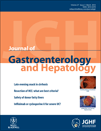Endoscopic papillary balloon dilatation versus endoscopic sphincterotomy in the treatment for choledocholithiasis: A meta-analysis
Conflict of Interest Disclosure: All authors disclosed no financial relationship relevant to the publication.
Specific author contributions: Study concept and design: Yang Bai, Yangyang Liu; Bibliographic search, extraction of data, and drawing of the database: Siheng Lin, Kun Xiao; analysis and interpretation of the data: Pingyan Chen, Shengli An; drafting of the manuscript: Yangyang Liu, Peizhu Su; critical revision of the article for important intellectual content, final approval of the article: Fachao Zhi.
Abstract
Background and Aim: Endoscopic papillary balloon dilatation (EPBD) and endoscopic sphincterotomy (EST) are two common nonsurgical treatments endoscopic retrograde cholangiopancreatography (ERCP) for choledocholithiasis. The aim of this study was to compare the efficacy and safety of EPBD and EST in the treatment for choledocholithiasis, confining the analysis to work reported in the last decade.
Methods: The rate of overall postoperative complications was chosen as the primary outcome, and 10 other outcomes were secondary outcomes. Relative risk (RR) or Peto odds ratio (OR) were computed as the measures of pooled effects. We planned sensitivity analyses a priori for examining the change in robustness of the sensitivity to excluding studies with some inappropriate objects, technique defects or without full-text acquisition.
Results: For complete stone removal, EPBD was similar to EST (95% vs. 96%, P = 0.36) and overall postoperative complications (14.0% vs. 11.7%, P = 0.53). The incidence of post-ERCP cholangitis (2.5% vs. 1.8%, P = 0.40), basket impaction (0.9% vs. 0%, P = 0.16) and perforation (0.0% vs. 0.4%, P = 0.17) were equivalent between EPBD and EST. On the other hand, EPBD caused more post-ERCP pancreatitis (PEP) (9.4% vs. 3.3%, P < 0.00001), but less hemorrhage (0.1% vs. 4.2%, P < 0.00001). People undergoing EPBD required more use of endoscopic mechanical lithotripsy (35.0% vs. 26.2%, P = 0.0004). The results of sensitivity analyses showed no substantial change.
Conclusion: EPBD is comparable to EST for stone extraction, though it requires more endoscopic mechanical lithotripsy (EML). EPBD may outweigh EST for patients with coagulopathy; however, it may cause more PEP.




